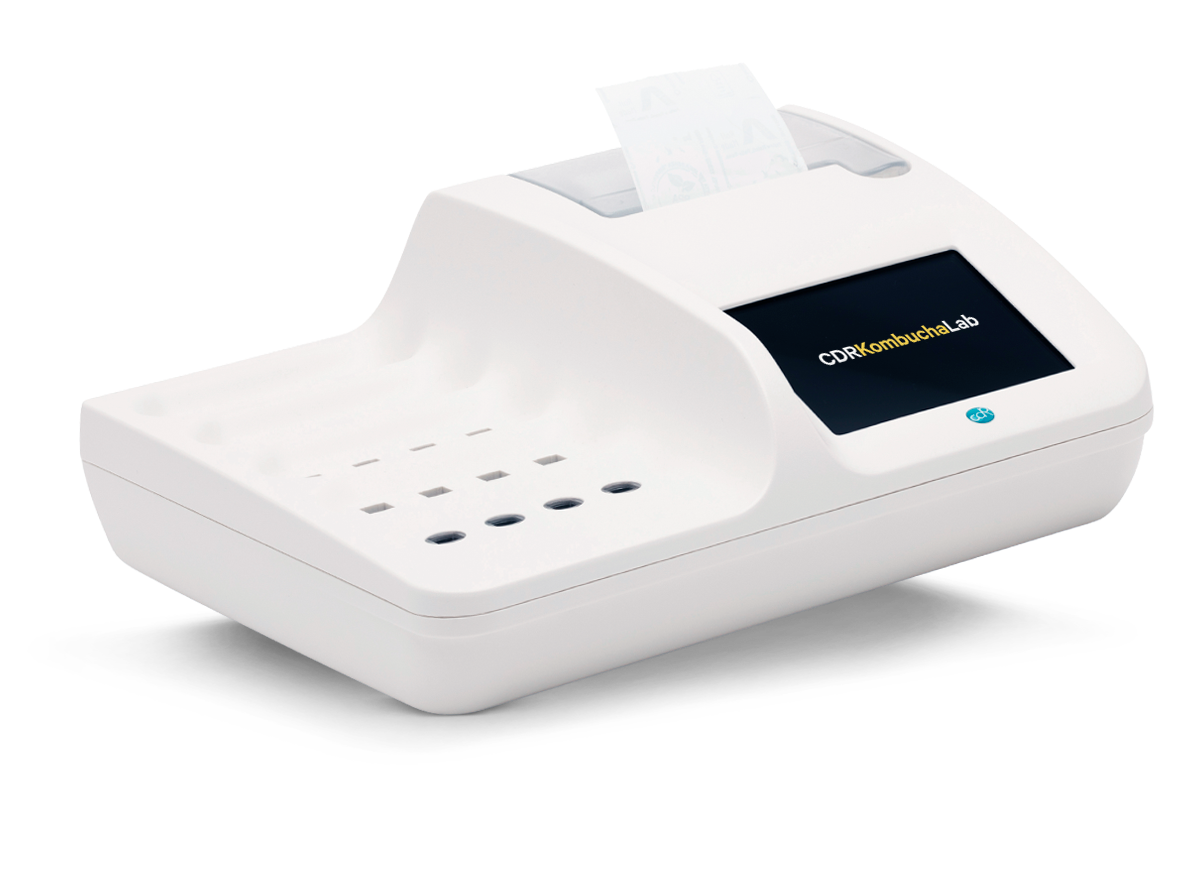Determination of L-Malic Acid in Kombucha
The content of organic acids in general, as of L-Malic acid in particular, plays a fundamental role in determining the beneficial effects of kombucha. Moreover, as L-Malic acid contributes to the organoleptic qualities of the drink, it is important to monitor its levels in order to evaluate the quality of the final product.
Method
Test type: End Point.
Time testing: 4 minutes.
Analysis sessions with multiple samples are possible for up to a maximum of 16 tests for CDR KombuchaLab and 3 tests for CDR KombuchaLab Junior.
...
Sample treatment
For precise and repeatable analysis, degas the sample using the ultrasonic bath (code 222062) and clarify it, if necessary, using the centrifuge (code 222061).
Principle of the test
L-Malic acid is oxidized in an alkaline environment through an enzymatic reaction and converted into oxaloacetic acid, which is turn produces NADH. The increase of absorbance, measured at 366 nm (end-point), is directly proportional to the concentration of L-Malic acid in the sample.
...
Calibration curve
The calibration curve of CDR KombuchaLab, obtained using reference methods, confirms the excellent linearity of the system over the whole testing range.
...
Reagent test Kits
Measuring range
| Analyses | Measuring range | Resolution | Repeatability |
|---|---|---|---|
| L-Malic acid [0.05-5] g/L | 0.05 - 5 g/L | 0.01 g/L | 0.08 g/L |
The Analyzers for process and quality control in kombucha brewing
CDR KombuchaLab
Complete analysis panel, supplied already configured
Up to 16 determinations simultaneously
Possibility of carrying out analyses of the same sample
Integrated printer
Full connections (LAN - USB - Bluetooth barcode/QR code reader)
CDR KombuchaLab Jr
Partial analysis panel, customisable configuration
Up to 3 determinations simultaneously
Wireless connection to external printer
USB connections
